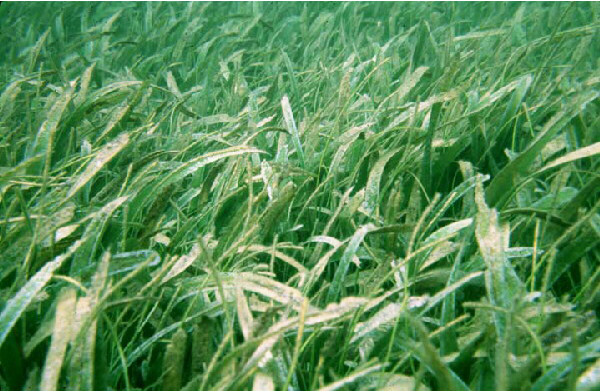

Seagrass meadows are ecologically important habitats in marine environments. Seagrasses and their associated microalgae are very productive, so that there is lots of food for small invertebrates and fishes, which also find the seagrass blades and rhizomes great protective cover. As a result, the abundances of these creatures are very high, attractive to larger marine organisms, especially fishes, in search of good feeding areas. Seagrass meadows serve as important "nursery grounds" for the juvenile stages of commercially important shrimps, crabs, lobsters, and fishes, and as important feeding sites for adult fishes and birds.

My studies have focused on the small invertebrates down near the base of the food chain, especially the small shrimps, crabs, other small crustaceans, and gastropods (snails). I have collections of monthly samples from tropical seagrass (Thalassia/Syringodium) meadows on the north coast of Puerto Rico, from which only the shrimp and hermit crab fauna has been very well analyzed.


Sampling during the day and then later at night demonstrated that shrimps and hermit crabs are very nocturnal in their activity (see Bauer, 1985 a-c). Most shrimp species are more abundant (collectable) at night because of their activity (feeding, mate search etc.) during that time. During daylight hours, some species burrow down into the bottom while "blade" species cling more tightly to seagrass blades, making them less available to collection by nets. During the day, hermit crabs are found clustered in great numbers around pieces of coral debris or other structures on the seagrass meadows. At night, they leave these clusters and actively spread out over the meadows, engaging in as yet unknown activities (one can hypothesize feeding, search for mates, shells etc.) Nocturnal activity has evolved in these small seagrass crustaceans to reduce detection by day-active fish predators which hunt by vision.
A comparative study on reproduction of seagrass shrimps
has been discussed in the previous section. I am also interested in latitudinal
trends in body size, longevity, and other life
history characteristics of seagrass crustaceans. Several aspects of
biogeography of seagrass fauna are of interest, such as latitudinal trends
in species richness and the taxonomic composition of seagrass faunas from
different parts of the world (what groups occur, factors explaining their
distribution etc.
Back to Home Page